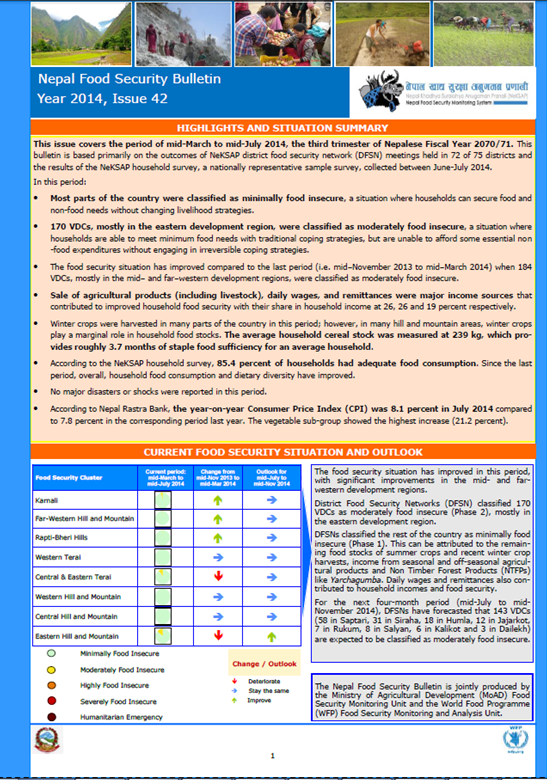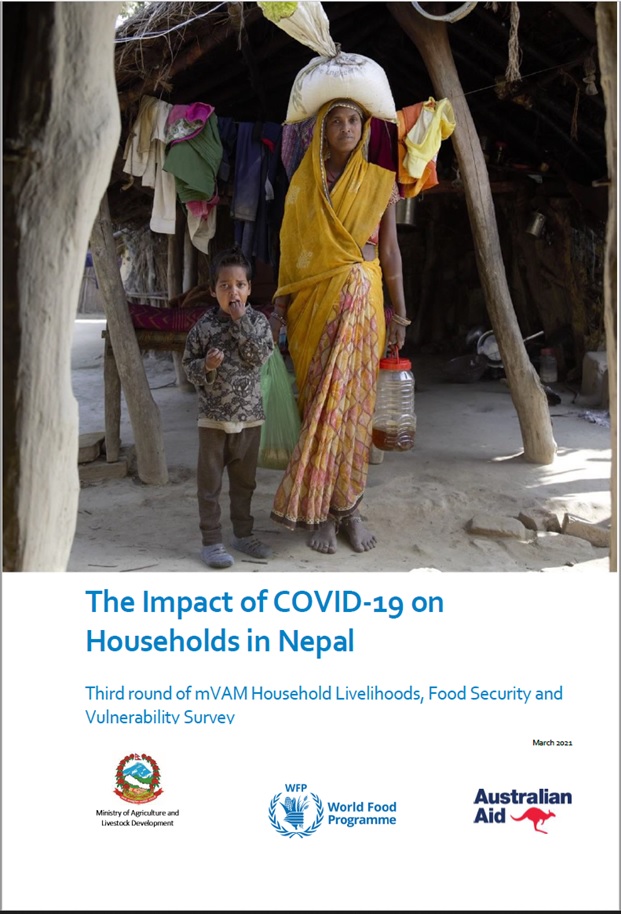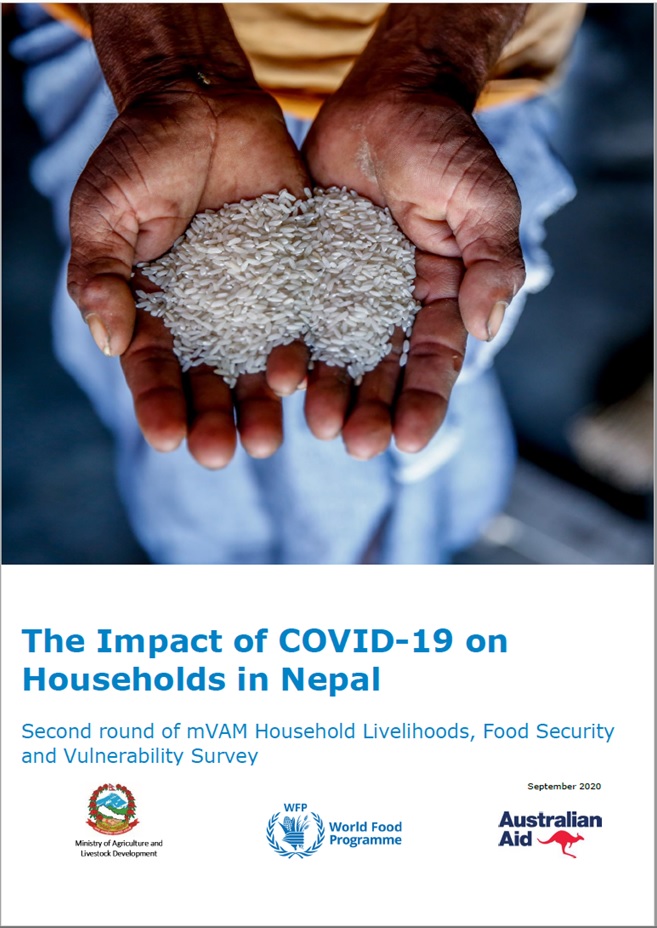Food Security Bulletin No.42

In this period:
Most parts of the country were classified as minimally food insecure, a situation where households can secure food and non-food needs without changing livelihood strategies.
170 VDCs, mostly in the eastern development region, were classified as moderately food insecure, a situation where households are able to meet minimum food needs with traditional coping strategies, but are unable to afford some essential non -food expenditures without engaging in irreversible coping strategies.
The food security situation has improved compared to the last period (i.e. mid–November 2013 to mid–March 2014) when 184 VDCs, mostly in the mid– and far–western development regions, were classified as moderately food insecure.
Sale of agricultural products (including livestock), daily wages, and remittances were major income sources that contributed to improved household food security with their share in household income at 26, 26 and 19 percent respectively.
Winter crops were harvested in many parts of the country in this period; however, in many hill and mountain areas, winter crops play a marginal role in household food stocks. The average household cereal stock was measured at 239 kg, which provides roughly 3.7 months of staple food sufficiency for an average household.
According to the NeKSAP household survey, 85.4 percent of households had adequate food consumption. Since the last period, overall, household food consumption and dietary diversity have improved.
No major disasters or shocks were reported in this period.
According to Nepal Rastra Bank, the year-on-year Consumer Price Index (CPI) was 8.1 percent in July 2014 compared to 7.8 percent in the corresponding period last year. The vegetable sub-group showed the highest increase (21.2 percent).
Download English Version Download Nepali Version
Leave a Comment
News & Events
- Brief on the Food Security Situation in Nepal (Mid-July to mid-November 2017)
- Launch of Food Security Information System for Nepal
- Second Advance Estimate of 2016/17 Wheat Production in Nepal using CRAFT
- Brief on the food security situation in Nepal (Mid November 2016 to Mid March 2017)
- Updated NeKSAP guidance on food security response analysis and district food security monitoring

